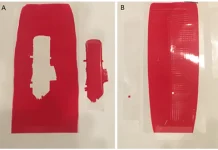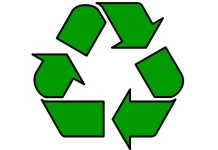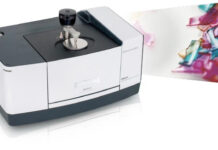by Jay Roberts, UV printer product manager, Roland DGA Corporation
Digital printing technology is pushing the envelope when it comes to what we can print on and how to do so more efficiently. “Can I print on that?” is the new mantra, as customization increasingly replaces mass production as the new norm.
Let’s take, for instance, a plain cellphone cover. There’s nothing spectacular about this generic piece of plastic. However, once it’s decorated, the perceived value of the product exponentially increases. The performance of the case hasn’t increased, yet people are willing to pay more, simply because it has been personalized.
How does UV printing differ from other printing methods?

Ultraviolet (UV) printing is different than traditional pigment, solvent inkjet and commercial offset printing methods in many ways. While it is still ink on “paper,” the ink cures through a completely different process and the “paper” is no longer just paper. Instead of having solvents in the ink that evaporate into the air and absorb into the paper, UV inks dry using photoinitiators in the ink and are solidified by UV lamps. When the inks are exposed to ultraviolet energy, they turn from a liquid into a solid. Thus, UV-curable inks are “cured” once they are exposed to the wavelengths of UV energy.
This curing process is advantageous for many reasons. One of the biggest benefits of UV printing is that there are fewer emissions of volatile organic compounds into the environment, as the solvents don’t evaporate like conventional inks. Another advantage of UV printing is that the inks can cure on plastic and other nonporous substrates. Because the inks cure through this photochemical process, it’s not necessary for the ink solvent to absorb into the stock. The UV process allows for printing on just about anything. Essentially, if the media or product can get through or under the printer, it can be printed.
But, adhesion can still be an issue when it comes to UV printing. It is important to understand that, while UV printers can print to virtually anything, there may still be adhesion or durability issues that need to be overcome.
Challenges in decorating with UV inks
UV printers can print on a variety of unusual substrates, ranging from wood and wooden veneer, glass and sheets of metal to fabrics and plastics of all shapes and sizes. Since UV inks dry or cure so quickly when exposed to UV energy, there’s no time for them to soak into the media. The ink dot sits on top of the uncoated sheet as a purer, less contaminated dot, ultimately allowing for a vibrant and “crisp” color appearance.
Printing successfully with UV inks depends upon being able to expose the inks to enough ultraviolet energy for curing to take place without making the substrate too brittle, while at the same time ensuring an acceptable level of adhesion to the substrate. This can be extremely difficult, as each type of substrate has different surface tensions or dyne levels.

Dyne level or surface tension in UV printing is the property of a UV ink forming unbalanced molecular forces at or near the surface. If this is higher than the surface energy of a material, the liquid tends to form droplets rather than spread out. Plastic materials can have very different surface energies based on their composition and how they are formed. The surface tension is normally measured in energy units called dynes/cm.
If the ink has a dyne level lower than the material’s surface energy, then the ink will spread out over its entire surface in a uniform, wet layer. If the ink’s dyne level is equal to or higher than a material’s dyne level, the ink becomes cohesive and tends to remain in droplets, thus allowing for better adhesion to plastics.
Many plastics, such as polypropylene and polyethylene, have poor dyne levels for UV printing. While the print still is very good, the durability or adhesion to the plastic is not necessarily acceptable for the end user’s application, and the print may be able to be scratched off.
So, how can the dyne levels of raw plastics or pre-formed plastic products be controlled? The development of adhesion promoters has dramatically increased the adhesion of UV ink to plastic products. Adhesion promoters, sometimes referred to as coupling agents, are bi-functional materials that increase adhesive strength between the coating and the substrate. Unlike priming systems, adhesion promoters are generally applied at thinner film thicknesses. An adhesion promoter’s effectiveness depends on both the substrate and the adhesive being used. Surface pretreatments, such as solvent cleaning or mechanical etching and corona treatment, can be used with adhesion promoters as part of a pretreatment method. Within a class of materials, the functionality on the backbone of the molecule surface will vary based on the resin system employed as well as the substrate to which it is attached.
 Many ink manufacturers have developed adhesion promoters to aid in the printing process. Adhesion promoters for polypropylene and polyethylene are widely used in UV printing. These promoters can help create a chemical bond to different types of plastics and, while they are widely used within the UV printing industry, do have varying success factors that must be tested.
Many ink manufacturers have developed adhesion promoters to aid in the printing process. Adhesion promoters for polypropylene and polyethylene are widely used in UV printing. These promoters can help create a chemical bond to different types of plastics and, while they are widely used within the UV printing industry, do have varying success factors that must be tested.
With the UV printing process, there are two useful tests that can be employed to evaluate adhesion – a traditional “scratch” test and a “cross-hatch” test. Each of these tests provides a different evaluation of the bond between the plastics product and the adhesion promoter and UV-cured ink printed to the object or raw material.
The scratch test is similar to a traditional abrasion test. A metal object, such as a penny, is vigorously rubbed on top of the UV print. Depending on the number of passes and vigor, it can be analyzed and given a “score” or rating. The better it performs against the abrasion, the higher the durable score.
The “cross-hatch” test is performed again after the adhesion promoter and UV-cured print have been output. Using a razor blade, knife or other sharp cutting tool, such as a special cross-hatch cutter, two cuts are made all the way through the UV print down to the substrate, forming an “X” mark with a 30 to 45-degree angle between the angles of the cuts.
An aggressive tape is placed at the center of the “X” and then quickly removed. The area then is examined to see if any UV ink has been removed. Again, it can be analyzed and given a “score” or rating. The better it performs against the “cross-hatch,” the higher the durability score.
 While adhesion is a common issue with UV printing because of the vast amounts of printable objects or substrates, the acceptable level must be identified and tested on the final products the user is printing on. Because UV printers can print onto just about anything, although they still may have adhesion or durability issues, it is important for the print provider to show the end user test prints to gauge the acceptable durability on the product based on two questions: 1) How long will the product be used, and 2) Will the product be handled for extended periods of time? The answers to these questions will provide the acceptance levels, which helps to ensure customer satisfaction.
While adhesion is a common issue with UV printing because of the vast amounts of printable objects or substrates, the acceptable level must be identified and tested on the final products the user is printing on. Because UV printers can print onto just about anything, although they still may have adhesion or durability issues, it is important for the print provider to show the end user test prints to gauge the acceptable durability on the product based on two questions: 1) How long will the product be used, and 2) Will the product be handled for extended periods of time? The answers to these questions will provide the acceptance levels, which helps to ensure customer satisfaction.
Comments
UV print technology makes it simple to print on a vast array of rigid materials, including plastics. Being able to print directly to plastic objects – whether raw or pre-manufactured reduces both operation and delivery time. It also allows the user to incorporate white and gloss inks in glossy or matte finishes to create unique textures – enhancements that add value and sophistication to the end product. In addition, UV technology helps print providers expand their applications and product offerings by enabling them to print on wider variety of substrates.
Jay Roberts, UV printer product manager at Irvine, California-based Roland DGA Corporation, has been with Roland since 2014. Prior to this, Roberts was with Fujifilm, where he served as a professional service advisor on the integration of G7 for both conventional and digital workflows as well as installation/training for various UV printers, including the Inca Onset. From 2001 to 2005, Roberts was with the now-defunct Nelson-Keystone, where he was a Roland product dealer. As a UV print specialist, Roberts spends much of his time educating customers about Rolands VersaUV LEF and LEJ series printers, packaging, POP and product customization, while also leading workshops on digital printing and creative art. For more information, visit www.rolanddga.com.







